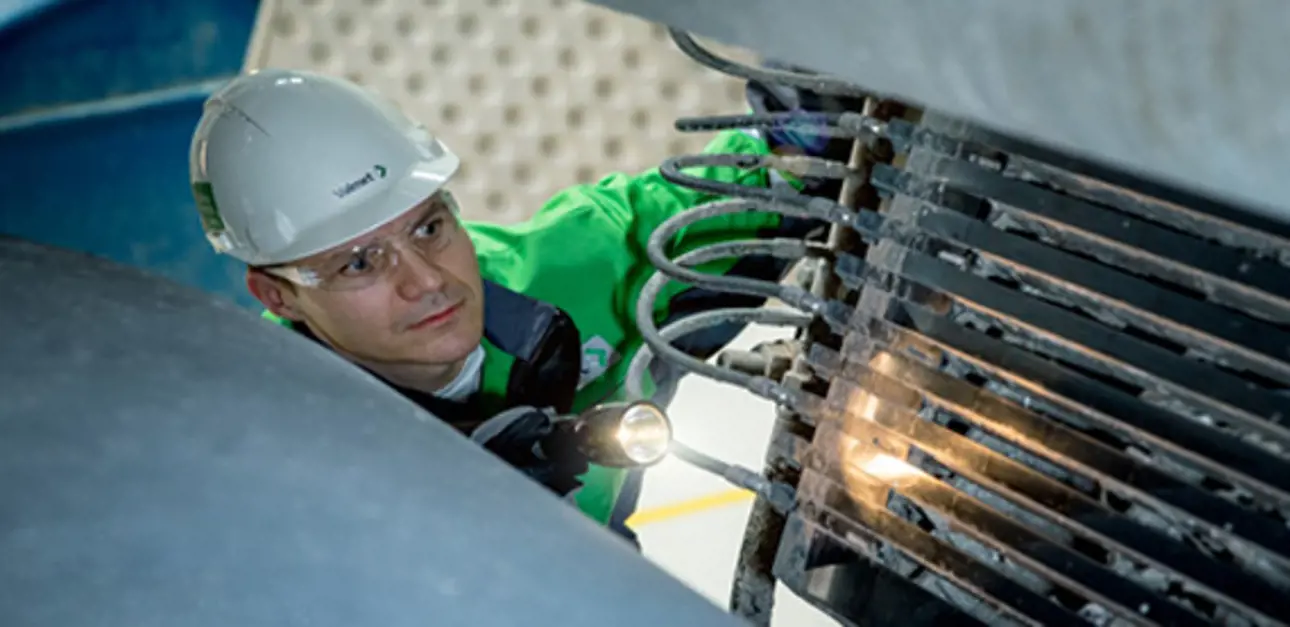Proper planning ensures a succesful shutdown

An annual five-to-ten-day shutdown typically eats up a third of a mill’s or plant’s annual maintenance budget. Furthermore, there are always risks involved that may either cause additional costs or postpone the scheduled start-up of the plant. With Valmet’s detailed shutdown planning and in-depth project management experience, possible risks can be minimized and the planned tasks can be accomplished on time and on budget.
“Our maintenance people have a vast experience of all kinds of situations that may be encountered while planning and carrying out shutdowns. If something unexpected comes up – which is often the case – we are able to find good, alternative solutions. Our people can see if something is not going well and take the required corrective action,” points out Jaakko Reivo, Project Manager, Site Operations, Valmet, who has been involved in over 100 shutdowns around the world since the late 1980s.
Planning on a rolling basis
The key to a successful shutdown lies in its detailed planning and scheduling ahead of time. Without this essential step it would be impossible to carry out all the required overhaul work, check-ups and measurements needed during the shutdown.
“Planning for the next major shutdown should start right after the previous one has ended. Planning should be carried out on a rolling basis; planned tasks should be added to the shutdown plan as soon as possible and unplanned tasks added as they come up,” says Timo Harjunpää, Manager, Sales & Global Operations Development, Valmet.
Valmet offers shutdown services either as part of its outsourcing or as a separate service. At sites that have outsourced their maintenance operations to Valmet, shutdowns are carried out by Valmet’s onsite maintenance team, and are supported by resources from Valmet’s local or global specialist network, as well as local and global suppliers.
Cooperation, communication and control
“Shutdown planning starts with a meeting between the customer’s production people and our maintenance team. At the meeting we identify the tasks required and schedule them in the computerized maintenance management system (CMMS). We then allocate the required spare parts and resources to the shutdown. We discuss in detail how long each job will take and who will carry it out,” Harjunpää explains. “Not everything can be done at the same time, so there has to be some form of prioritization.”
It’s also important to involve the customer’s sales team to discuss the shutdown schedule. For example, in paper sales there are more deliveries in some months than in others, meaning that paper production must not be down at that time.
There are also other stakeholders to take into account, and maintenance work needs to be in sync with other possible upgrade or new investment projects. “It is highly important that all the relevant information is placed openly on the table for everybody to see what else is being done. This way everybody has access to hydraulics, electricity and the crane, to mention but a few examples. Communication and openness are essential,” Jaakko Reivo adds.
Good planning also calls for an estimate about the shutdown costs, and at a later stage, close control to stay within the set budget. In shutdown planning, there is always a freezing point, after which no new tasks will be added to the to-do list.
Safety first
Site safety is extremely important already at the planning stage. In a major shutdown, there may be hundreds of people involved, including external workers with no prior site experience. This inevitably increases safety risks, and for this reason safety training is always included in the schedule. Furthermore, major lifting with cranes has to be carefully scheduled to ensure safety.
Well planned, more than half done
According to an old saying, if something is well planned it is already half done. With maintenance, however, being well planned means more than merely being half done according to Reivo.
Valmet’s shutdown service also ensures timely spare partsWith scarce resources and a thin maintenance organization, there’s often not much time to think about the spare parts needed for a major shutdown. Hasty choices may prove to be the wrong ones, and required spare parts may arrive too late. Valmet has now expanded its shutdown service to cover spare parts as well. This enables the customers to plan, maintain and optimize their spare part deliveries and minimizes the risk of emergency purchases and maintenance delays. Benefits:
|

